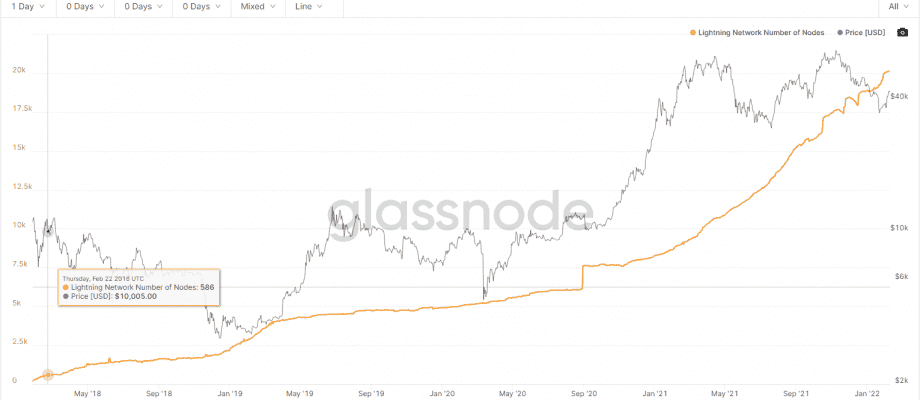Just a few weeks ago, Cash App, the financial app from Block (formerly Square), led by Jack Dorsey, announced that it had integrated the Layer Two solution into the Bitcoin Lightning Network. At the Monday, February 7th, then the messagethat Lightning is now available. The integration is supported by the Lightning Network Kit (LDK) Spiralwhich also belongs to the parent company block heard. Spiral operates completely independently and allows developers to integrate the Lightning Network (LN) into their apps.
Cash app users can now use Lightning simply by scanning a QR code. in one conversation with Bitcoin maximalist Michael Saylor, CEO of software company Microstrategy, Dorsey described the integration of Lightning as the achievement he is most proud of in his career. Just how much the tech entrepreneur cares about Lightning is also reflected in a tweet he sent on Tuesday, February 8th:
The star investor Cathie Wood von Ark Invest seems to continue to have great faith in block to have. The investment company used the price turbulence of the past few weeks to change its block position in January alone $78 million to increase. The fintech company currently accounts for around four percent of the flagship ETF Ark Innovation.
Jack Dorsey focuses on Bitcoin
The fact that former Twitter boss Jack Dorsey is a big advocate of bitcoin is no longer a secret, at least it’s clear in his Twitter bio to read. What is striking, however, is his increasing entrepreneurial focus on the topic of Bitcoin, which Dorsey made clear above all by renaming Square to Block.
What is Lightning?
Lightning is one of the so-called second-layer solutions. It thus fulfills an important function in the question of scaling Bitcoin. Put simply, this is how it works: Transactions between two or more parties are outsourced and then settled off-chain. The spin-off makes it possible to process significantly more transactions per second, a simple and ingenious answer to Bitcoin’s often-criticized scaling deficits. The number of active Lightning Nodes has increased significantly since early 2018 (see image below).
Lightning essentially takes on a relief function, minimizing interventions in the Bitcoin blockchain and thus reducing transaction costs. The main catalyst in the Lightning adoption was the introduction of Bitcoin as the official means of payment in El Salvador. Here users can choose between an on-chain or a Lightning version. The official launch took place on September 7, 2021. As can be seen in the figure above, the number of active nodes in the Lightning Network skyrocketed after the launch.
Bitcoin on-chain analyst Will Clemente from Blockware Solutions also sees the Lightning adoption very positively. In a Twitter post on February 8, he writes that he expects a similar development in the coming years. He also interprets this as an indication that Bitcoin is developing into a medium of exchange (see tweet below) – i.e. into a kind of currency suitable for the masses.
Set up a bitcoin & crypto savings plan
Invest regularly in Bitcoin and benefit from the cost-average effect in the long term. We’ll show you how.
To the guide
